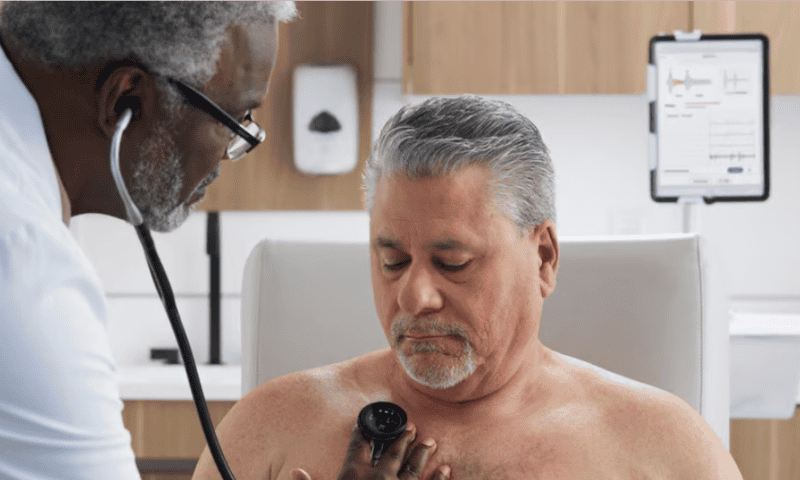Just a few months after the official U.S. launch of its Sensora platform, Eko Health has published a study detailing the real-world performance of the platform’s first artificial intelligence-powered heart disease detection tool.
Sensora combines Eko’s digital stethoscopes with an AI algorithm trained to identify structural heart murmurs that may be linked to valvular heart disease, or VHD. The AI was cleared by the FDA last year and goes beyond just spotting signs of murmurs, also analyzing their timing and severity to distinguish between innocent and absent, and systolic and diastolic murmurs.
The platform also includes Eko’s Care Pathway Analytics software, which clinicians can use to track their patients’ progress through the healthcare system.
In study data published in the journal Circulation and presented at the American Heart Association’s scientific sessions this week, Eko found that the AI tool could significantly improve murmur detection—and, therefore, the rate of valvular heart disease diagnoses.
The study spanned a total of 369 patients who were at least 50 years old and had never been diagnosed with VHD or a heart murmur. Each patient was examined using both a standard analog stethoscope and one of Eko’s digital stethoscopes, equipped with the AI algorithm.
After comparing the results of each examination to echocardiogram data, the AI-equipped stethoscope was found to be able to spot signs of VHD with about 94% sensitivity, compared to just over 41% for the standard stethoscopes. In total, the AI was able to identify 22 patients with “moderate-or-greater” cases of the disease that had gone previously overlooked, while the analog method uncovered only eight new cases.
The results were much less stark when it came to specificity—that is, classifying negative cases of VHD. On that metric, Eko’s digital device scored just under 85%, while the non-AI device topped 95%.
The study’s authors concluded that Eko’s method “showed meaningful impact on new discovery of VHD as compared to conventional practice,” and they suggested that implementing the technology into regular point-of-care exams could improve the diagnosis rate, patient treatment paths and overall outcomes.
Those improvements are much needed, according to Eko, which cited data in a release this week showing that around half of all adults over the age of 65 have some form of VHD.
Though most of those instances are mild, with only about 10% of the age group bearing a clinically significant case of the disease, VHD can progress quickly if left undiagnosed and untreated—a common occurrence, since many patients are asymptomatic, and many symptoms that do crop up are nonspecific—and can ultimately lead to heart failure, stroke and even death.
“The implications of undiagnosed or late diagnosis of valvular heart disease are dire, as well as costly to our health system,” Moshe Rancier, M.D., lead author and principal investigator of the study, said in Eko’s release. “This study demonstrates that patients can be more effectively evaluated for VHD in primary care by augmenting the standard cardiac exam with AI-enabled technology.”
Next up, the researchers plan to continue enrolling participants in the study to gather more evidence, and they’ll also follow the patients for 12 months after the initial exams to assess their clinical outcomes.

